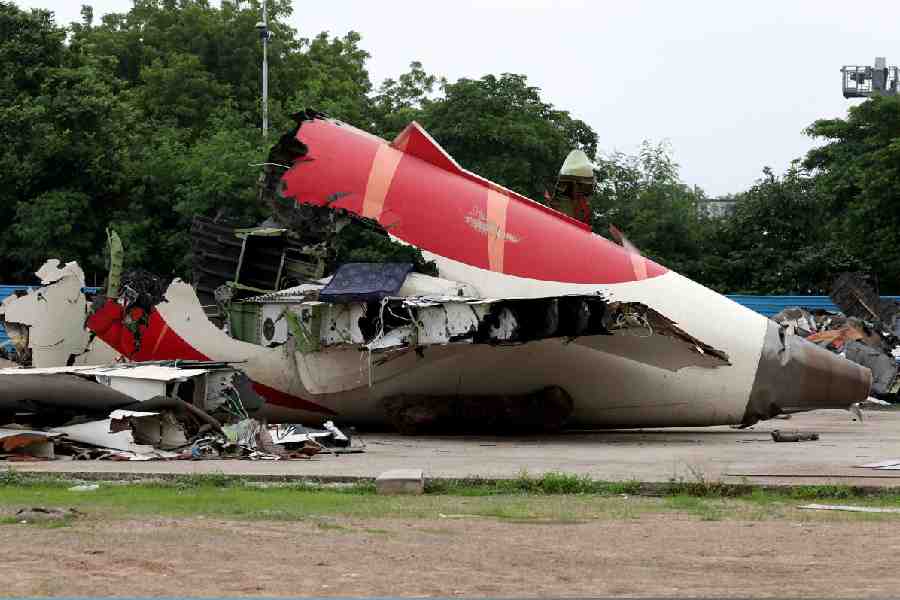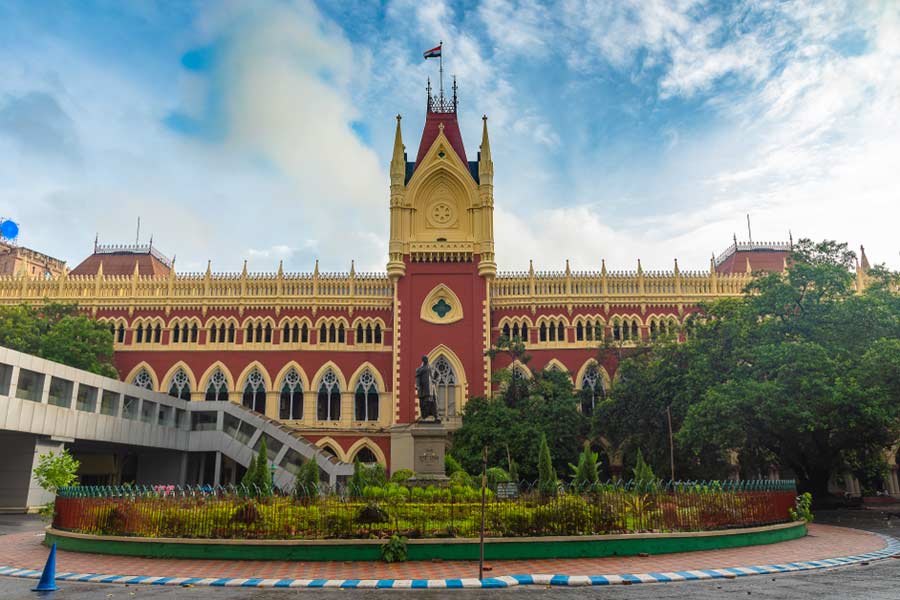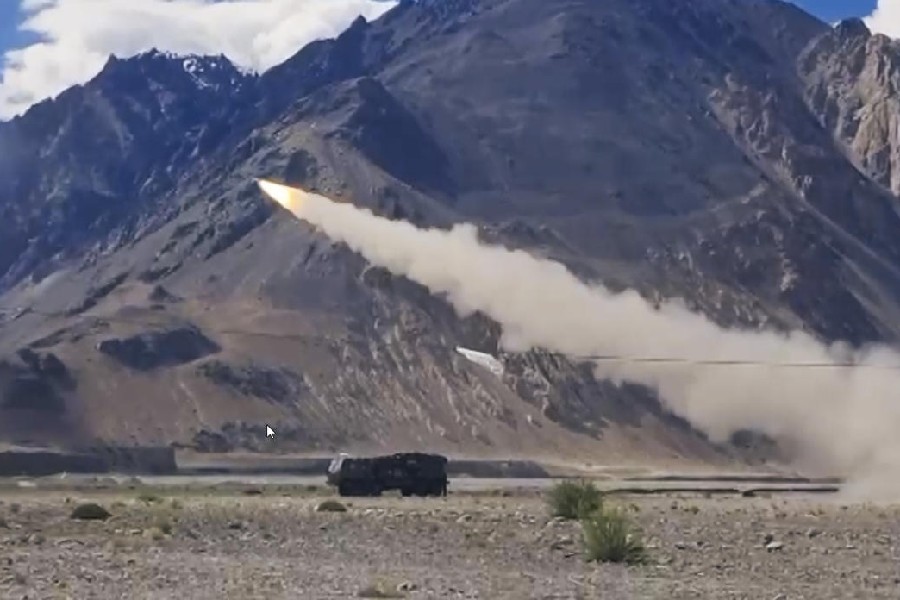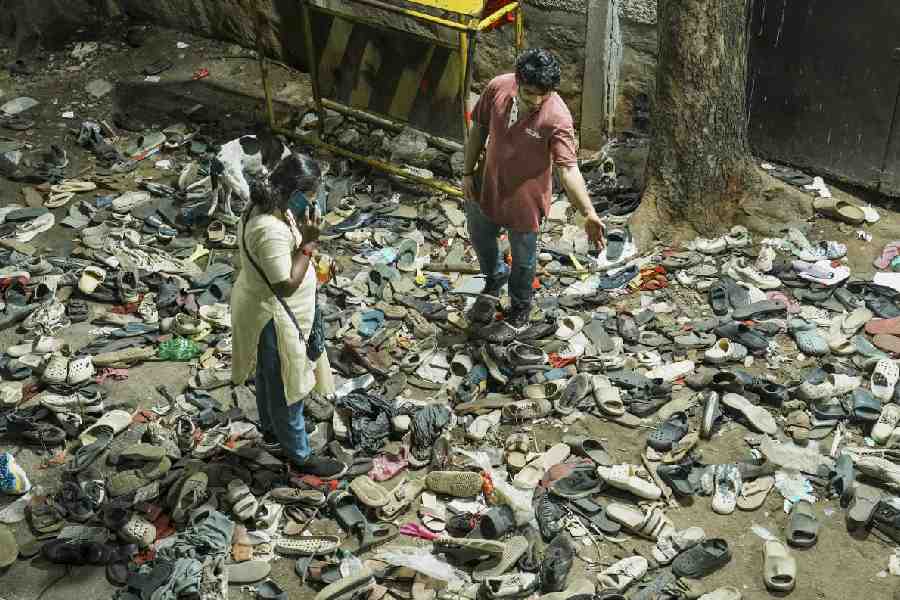 |
| G?nther Uecker and his wife Christine before a panel of words from the Old Testament which he wrote in Bengali script at Birla Academy of Art & Culture. Picture by Aranya Sen |
Large wooden structures and spiked implements, some bound with shreds of white cloth, occupy two large halls of Birla Academy of Art and Culture. Words in Bengali script signifying violence, torture, pain, humiliation and other instances of man?s inhumanity to man cover one wall.
These objects that have a direct, straight-forward appeal are very much in keeping with the character of G?nther Uecker who created them. This leading German artist, who was present at the opening on Wednesday, is a down-to-earth man without any airs and graces, a man who could be mistaken for a peasant.
This is not a surprising trait in a man whose father was a farmer and who takes pride in doing things like any workman ? chopping and hewing wood, stirring and slathering paint on a surface, hammering hundreds of large nails into wood or stone or taking imprints of his body covered with ash, which he connects with the Chernobyl disaster.
Uecker?s work stands out for its intensely spiritual ? almost archaic ? vision. They seem to be attempts at penetrating, connecting, embracing. Be it in the use of a field of cadmium yellow ? colour of knowledge, of being awake ? on an inverted canvas or creations of icons of pain there are continuous references not only to Catholic faith but to Buddhist philosophy and Judaism as well.
Brought up on dialectical materialism, his experiments are attempts at getting as close as possible to god.
Seeing him in action in the film, Poetry of Destruction, one would be surprised by the tremendous physical energy of the man born in 1930 on the coast of the Baltic Sea, in what was then GDR.
Uecker, who took visitors around for a guided tour of his exhibition, explained the paradoxes in his philosophy of art ? how his expressions of repressed violence are also linked to creativity, just as ?exploiting? the earth ? furrowing it with ploughs ? leads to fertility. Art cannot resolve violence and aggression. But it makes dialogue possible that calls out for saving mankind.
When the Stuttgart-based Institute for Foreign Cultural Relations (IFA) told Uecker in 1992 that it would like to organise a retrospective of his, Uecker opted instead for a theme autobiographical in character that would reflect on the atrocities being perpetrated against foreigners at that time. This brought back childhood memories of the Nazi past. The exhibition has travelled 35 countries, and in each, he took words from the Old Testament and put them in the local language.
The table with spikes underneath was a throwback to his childhood, when he would hide under a table for protection. But a protective system could turn fascist just as governments often do, he said. The pieces of torn white cloth tied to one object suggested a massacre but they could also be strips from the clothes that farmers wear. He had done the same when he designed sculptural pieces for a production of Bach?s St Matthew?s Passion.
But be it hammering a forest of nails to create a box of fear, creating rakes or the rack, every action of Uecker?s is a spontaneous atavistic act that comes from himself.











